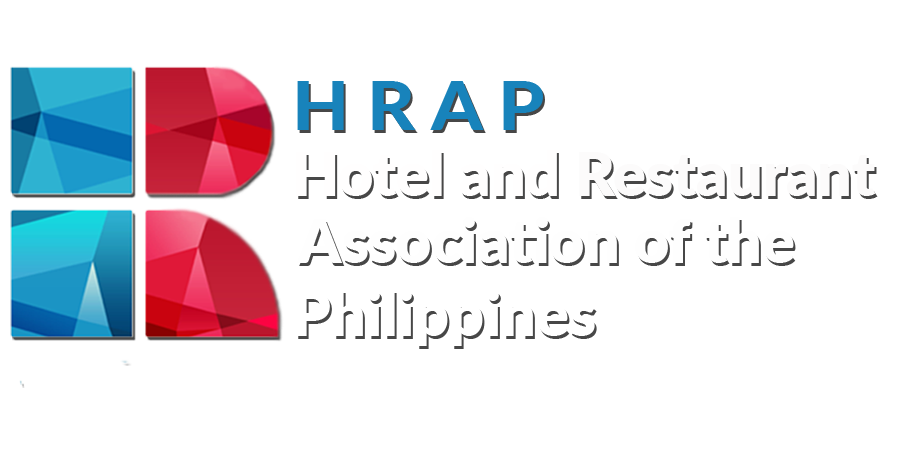Philippine Travel Guide
The Hotel and Restaurant Association of the Philippines
Eugene Yap | HRAP President
Formed in 1951, the Hotel and Restaurant Association of the Philippines (HRAP) is the single voice consolidating the Philippines’ private hospitality sector. It was formed when hotel managers and restauranteurs found themselves beset by common issues, such as service charges, breakages and losses, and theft amongst employees. Heads came together to form a united stand, prompting the association’s birth on September 12th 1951. HRAP was subsequently registered with the Securities and Exchange Commission and officially assumed its legal personality. In August 2001, HRAP was reincorporated for another 50 years.
As a non-profit organisation, the Association is operated by members of hotel owners, restaurant managers, and CEOs from various private enterprises. Their goal is to contribute to the development, growth and promotion of the Philippines as an attractive tourist destination. As the President and Chairman of HRAP, Mr. Eugene Yap discusses the federation today and explains why more people should consider adding his home country to their bucket list.
From a handful of owners and managers in the 1950’s, HRAP has grown into a full-fledged national organisation representing the interests and concerns of the hotel and restaurant industry across the whole country.
Outlook Travel (OT): Can you talk us through the origins of HRAP and its initial vision?
Mr. Eugene Yap (EY): The tourism industry in the Philippines just after WWII was quite challenging, as everyone was busy recovering from the war. Amidst these rebuilding efforts in Manila, the heart of the Philippines, there were just four hotels that were operating at the time. The managers and owners sought to unite among themselves just the four, and along with some restaurants they banded together and formed the Hotel and Restaurant Association of the Philippines in 1951. So, we have been operating as early as the 1950’s. At that time, our tourists were mostly newspaper men and photojournalists, documenting the recovery and development of the islands. Manila was very much the centre, since there was not much development going on elsewhere.
HRAP was registered on September 12th 1951 and has survived even up to today. From a handful of owners and managers, HRAP has grown to a nationwide organisation representing many interests and concerns both at local and national level. We now deal with legislators, both national and international, and we join other associations around the world. We expect to expand into Europe probably in a couple of years.
OT: What are your organisation’s current goals?
EY: We here in the HRAP hope to continue to take leading roles representing the Philippines’ private business tourism sector in the hotel and restaurant industry. Our membership comprises several sectors; we have the hotel, the restaurant, and suppliers are now part of it. We also have the education sector where we partner with colleges and universities because we believe that the education sector will produce the tourism leaders of the future. Unity and cooperation among industries is the key goal of the association. We encourage and foster high technical standards in business.
OT: How do you market the Philippines as a destination?
EY: The Philippines is extremely out of the way for international travellers. We are situated in the far, far east – it’s not as simple as crossing a border or hopping on an airplane for half an hour. It takes much longer than that! So, we only promote our very best. This includes the unique topographical features in the Philippines, and the personalised travel packages that we can offer to highlight outdoor activities.
We are marketing ourselves as both a natural and urban destination. In terms of nature, we have the beaches, the resorts, hiking trails and wildlife reserves which are slowly opening up. For indoors, we have plenty of sports activities in the urban areas and restaurants, modern and classical. Accommodation still abounds in the urban areas, but when you talk about the Philippines, you are really talking about nature and the outdoors. This is where we centre our marketing efforts.
In the Philippines, it is the local government agency at the Department of Tourism that really guides the tourism industry. Right now, the tourism department is looking into a travel bubble strategy, even within the Philippines. So hopefully when the pandemic restrictions are lifted, we can develop bubble destinations among the cities here.
“WE’RE LOOKING FORWARD TO THE FUTURE TO LIFT THE RESTRICTIONS SO THAT WE CAN CONTINUE WHERE WE LEFT OFF WITH TOURISM. I AM PROUD TO SAY THAT WE ARE EXCITED AND WE ARE READY”
— MR. EUGENE YAYP (PRESIDENT HRAP)
OT: How do you promote off-season travel (i.e. during rainy season)?
EY: In the Philippines, it is like summer all-year round - there are only two to three months when we experience the rainy season. This is a huge advantage for us as a more consistent travel destination. So, what we do is modify our travel packages if the outdoors are not available. Since the Philippines is a very big archipelago, we market from the north to south, east to west, and modify travel plans to go to different parts of the country. The other way we promote it would be by hosting special events. Both the Department of Tourism and even the private sector sponsor events to invite international travellers. Right now, these organisations will be inviting local travellers also. Right now, we continue to maintain online bookings all year round because online is key as the window to the future.
OT: Can you tell us how COVID-19 has affected the organisation, and the associated hotels and restaurants?
EY: In the Philippines, pre-covid in 2019, we had as many as eight million arrivals. For the Philippines, this is a good number, and we were hoping to increase it to nine million for 2020 but of course the pandemic hit. As a result, there have been challenges for everyone. Throughout 2020, a lot of agencies and restaurants reported that their revenue for the year had been halved or worse. What many of our members did, to save cost or to be practical and realistic, was suspend operations. For permanent closures, we are still unsure on the figures but at present it is few. Mostly, people are just waiting for the lifting of restrictions and so have undertaken temporary hibernation to reduce overhead.
Right now, hotels are mainly getting their business from returning overseas Filippino workers. As you know there is a big market for that, since the Philippines is one of the biggest exporters of human labour. Right now, people are returning home and before returning to their own homes they have to quarantine in the hotels – so the hotels and restaurants have been benefitting from this market since last year. Of course, the revenues are lower, but it’s still a welcome market for us. In the education sector, they have adopted online learning to find ways to synchronise their internships during this time.
OT: Why, in your opinion, should someone visit the Philippines?
EY: It’s not only because I am from the Philippines, but I love the Philippines - it’s a beautiful country. Filipinos are known for our hospitality, we are friendly and warm, and the summer weather is practically all year. So even if you encounter a typhoon, you can just transfer to another area.
The natural wonders and the uniqueness of the Philippines is really second to none. We have Philippine festivals; we call them fiestas. It is tradition for every city to have a couple of citywide festivals every year, so you can see the numbers of provinces and municipalities that we have. Just thinking about that, you can imagine just how many festivities and celebrations we have just in the Philippines alone.
OT: What are some of the country’s most unique landmarks?
EY: As a tropical area, we have many beaches that are entirely different from the beaches that you may find in Europe or North America. The beaches in the tropics make for an incredibly welcoming tourist destination, and our beaches and resorts are what we are most proud of.
We have underground rivers and then we have several new wildlife reserves. They are not as big compared to other countries but located in the northern and southern part of the islands where the land mass is more concentrated, so slowly wildlife is being introduced to tourism.
OT: What trends are transforming the tourism industry in Philippines and how are you utilising them?
EY: We continue to look over developments in the Philippines and we encourage our members also to look beyond themselves to see how we can help out. We really have been learning a lot, and I think education is foremost - both in our destination and for the tourism workers that will eventually become leaders.
The urban areas here are fast catching up with the rest of the world – we have a lot of structures now that are catering to the international business traveller. It’s not only nature that people are looking for, since there are times when you may need to do business in an urban environment. If they come here, the Philippines is so far away that you may as well travel as a tourist during your free time. I think the urban landscape will continue to sprout up fast.
The most important is a shift from the international market to the local market. As mentioned, we have more than 100 million Filipinos in the local population here, so if just a small portion of this can travel it will make a huge impact for the improvements of the tourism industry. This will play a big part for hotel and restaurant marketing strategies.
Furthermore, we are now focussing on travellers’ demographics. Individuals used to mainly join group tours, so now we are also encouraging travellers such as couples and families to tour independently and not wait for other people. We continue to focus and promote online bookings, but personalisation above all is the most important. Travel agencies are as important as any sector, since they are in a position to personalise the traveller’s requirements. Tourists aren’t always well-versed, or they’re not seasoned travellers, so the travel agencies are essential as the first vehicle to the travel destination.
OT: Are you optimistic about the future of the tourism industry in Philippines?
EY: In the Philippines we are so excited about reopening. As soon as we can lift our restrictions, everyone will go back to work and we are really gearing up for it. I manage one of the hotels here at HRAP, and we are refurbishing, refitting, and renovating a lot of things, so we are preparing. So, if you ask me are we optimistic - yes, we are!
We want to go back to pre-covid days. We’re looking forward to the future to lift the restrictions so that we can continue where we left off with tourism. I am proud to say that we are excited and we are ready. We must hope that the health situation will continue to improve around the world, so that we are raring to go.









